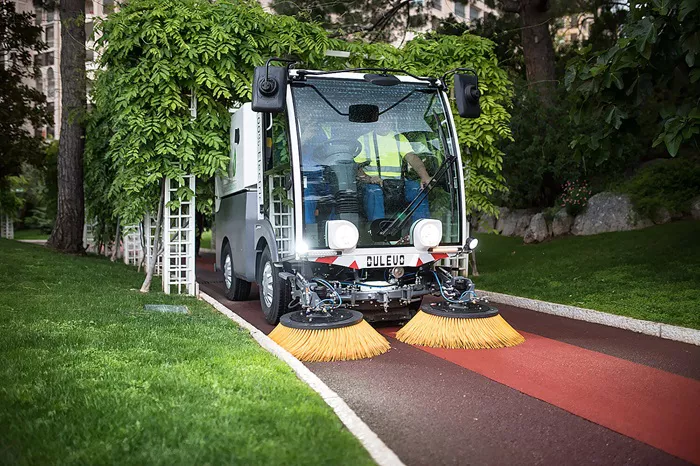Street sweepers are essential vehicles designed to maintain cleanliness in urban areas. In this article, we will delve into the intricacies of street sweepers, exploring their types, functions, operational techniques, and their impact on public health and the environment.
See Also: How Street Sweepers Work: A Guide to Keep Our Roads Clean
Types of Street Sweepers
Street sweepers come in various types, each suited for different environments and cleaning requirements. Mechanical Sweepers are the most common type, equipped with rotating brushes that sweep debris into a collection hopper. Regenerative Air Sweepers, on the other hand, use a powerful air blast to dislodge and collect debris. Vacuum Sweepers employ suction to gather dirt and waste into a storage container. Each type has its advantages depending on factors such as the type of debris and the terrain being cleaned.
Components and Mechanics
A typical street sweeper consists of several key components. The Sweeping System includes brushes or air jets that loosen debris. The Collection System gathers this debris into a hopper or storage tank. The Vacuum System, if present, creates suction to pull in finer particles. The Water System wets the surface to control dust. The Filtration System ensures that only clean air is released back into the environment. Understanding these components is crucial for effective operation and maintenance of the sweeper.
Operational Techniques
Operating a street sweeper efficiently requires skill and knowledge. Pre-sweeping Inspections are conducted to assess the area for hazards and to plan the route. Sweeping Patterns dictate the direction and sequence of sweeping to ensure thorough coverage. Adjusting Sweeping Parameters such as brush pressure and water flow rate optimizes cleaning performance. Monitoring and Maintenance of the sweeper’s systems during operation prevent breakdowns and ensure continuous functionality.
Environmental and Health Impact
Street sweepers play a significant role in improving environmental quality and public health. Dust and Debris Control reduces air pollution and respiratory issues. Stormwater Management prevents debris from entering water bodies, preserving water quality. Noise and Emission Regulations ensure that sweepers operate within acceptable environmental standards. Understanding these impacts highlights the importance of regular sweeping in urban maintenance.
Technological Advancements
Advancements in technology have transformed street sweeping practices. Telematics and GPS Integration optimize route planning and scheduling. Automated Sweeping Systems improve efficiency and reduce labor costs. Green Sweeping Initiatives focus on sustainability through electric or hybrid sweepers and eco-friendly cleaning products. Embracing these advancements enhances the effectiveness and sustainability of street sweeping operations.
Challenges and Solutions
Despite their benefits, street sweepers face several challenges. Traffic Management and pedestrian safety require careful coordination during operation. Budget Constraints may limit the frequency or scope of sweeping efforts. Seasonal Variations in debris type and volume necessitate adaptive strategies. Overcoming these challenges involves collaborative efforts between municipalities, contractors, and the community to maintain cleanliness effectively.
Training and Certification
Proper training is essential for street sweeper operators to maximize efficiency and safety. Operational Training covers vehicle controls, sweeping techniques, and emergency procedures. Maintenance Training ensures operators can perform routine checks and minor repairs. Certification Programs validate operator competence and adherence to industry standards. Investing in training and certification enhances operational proficiency and reduces the risk of accidents or equipment damage.
Case Studies: Successful Implementations
Examining successful street sweeping initiatives provides insights into best practices and lessons learned. City A implemented a comprehensive sweeping schedule that reduced particulate matter levels significantly. City B integrated GPS technology to optimize routes, reducing fuel consumption and operational costs. These case studies demonstrate the positive impact of strategic planning and innovation in urban cleanliness.
Future Trends
The future of street sweeping is poised for further innovation and sustainability. Smart City Integration will enable real-time data collection and analysis for proactive maintenance. Advancements in Materials Science may lead to more durable and efficient sweeping components. Robotics and AI could revolutionize autonomous sweeping capabilities. Anticipating these trends ensures that cities remain clean and sustainable in the years to come.
Conclusion
In conclusion, street sweepers are indispensable tools for maintaining urban cleanliness and environmental health. By understanding their types, components, operational techniques, and impact, cities can optimize their cleaning efforts for maximum effectiveness. Embracing technological advancements and addressing operational challenges are crucial steps towards sustainable urban maintenance. With continuous innovation and strategic planning, street sweepers will continue to play a vital role in creating cleaner and healthier urban environments worldwide.
FAQs:
What exactly does a street sweeper do?
A street sweeper is a specialized vehicle designed to clean streets and other paved surfaces in urban and suburban areas. It removes dirt, debris, leaves, and other waste materials from the road surface to maintain cleanliness and prevent pollutants from entering stormwater systems. Street sweepers use various mechanisms such as rotating brushes, air blasts, and vacuum suction to gather and collect debris into onboard containers for proper disposal.
What is considered a street sweeper?
A street sweeper is typically a motorized vehicle equipped with sweeping mechanisms to clean streets, roads, parking lots, and other paved surfaces. It can range from compact sweepers used in narrow streets to larger trucks designed for highways and urban thoroughfares. Street sweepers may employ mechanical brooms, regenerative air systems, or vacuum systems depending on the type of debris and the specific cleaning requirements of the area.
What is street sweeper in slang?
In slang or informal terms, “street sweeper” is sometimes used to refer to a large-caliber firearm, particularly a shotgun or a powerful automatic rifle. This usage is more common in certain urban communities or within specific subcultures where such terms may carry different meanings.
What do road sweepers do?
Road sweepers, which are essentially the same as street sweepers, perform the task of cleaning roads and other paved surfaces. They sweep up dirt, dust, leaves, litter, and other debris to maintain cleanliness, reduce air pollution, and prevent pollutants from entering water systems. Road sweepers are essential for maintaining public health, improving air quality, and enhancing the overall aesthetic appeal of urban environments.

